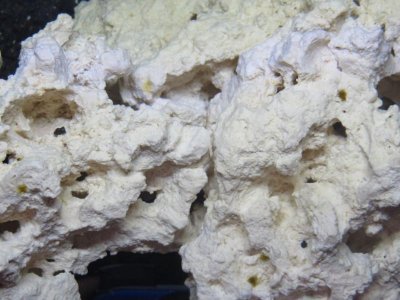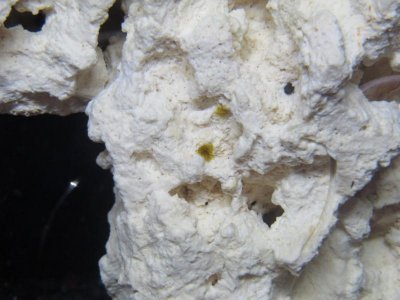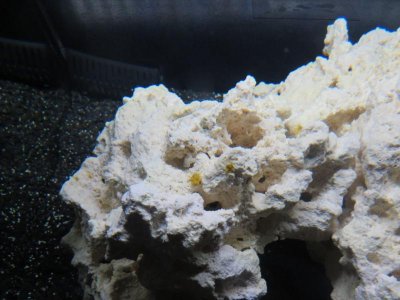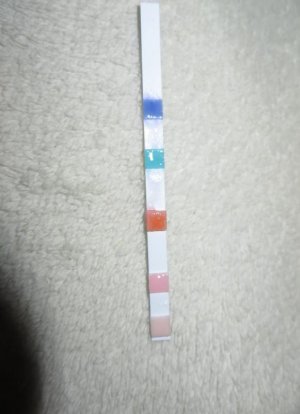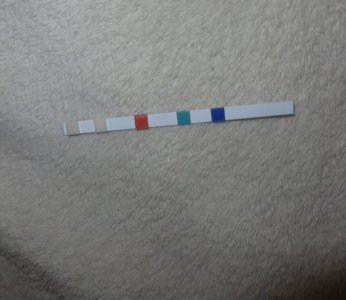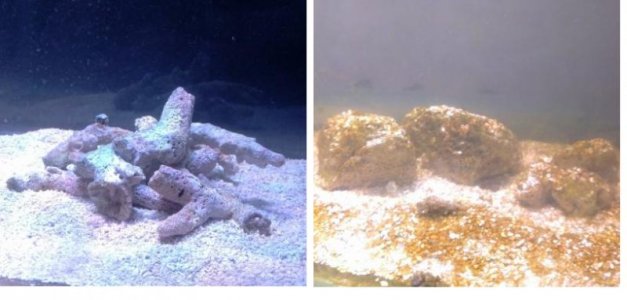You are using an out of date browser. It may not display this or other websites correctly.
You should upgrade or use an alternative browser.
You should upgrade or use an alternative browser.
Id please and thanks
- Thread starter naothan
- Start date
Scrubber_steve
I'm really very likeable
hey there my tank has cycled .. as far as i know
? Have you a zero reading for ammonia & nitrite?
What reading are you getting for nitrate?
When did you start the tank / cycle?
noticed these spots on rocks . they arent growing very fast
looks like the start of green hair algae (GHA) to me. Are you running the lights ? if yes,,, why?
If you're through a cycle you can add fish,,,, slowly, But you don't need to illuminate the tank yet, just ambient light will do for the moment, otherwise you're looking for nuisance algae trouble. Wait till the tank has matured a bit before implementing the lights.
When you do start using the lights don't add corals straight away. Wait & see if you get nuisance algae as a result of illumination, & take it from there.
Scrubber_steve
I'm really very likeable
zero ammonia. first test strip pic was 5 days ago 2nd pic 5 min ago .
lights on in the day blue at night
started the tank cycle mid jan
OK, ammonia zero,,, good.
Now you need to check nitrite - NO2 & make sure that's zero. You can get NO2 tested at the LFS so you don't have to buy a NO2 test kit.
Once NO2 is zero, and you have a nitrate - (NO3) reading your nitrification bacteria colony is somewhat established. You now need to get your de-nitrification bacteria population established, so go easy on the feeding or your NO3 will skyrocket.
You want to get the NO3 under control before getting too many fish, & definitely before thinking about adding coral.
Stop with the tank illumination untill you get control of NO3, or your asking for nuisance algae problems.
Scrubber_steve
I'm really very likeable
the last 2 pads on the test strip are no2 and no3
ok, but i don't have a color comparison to check them against so you'll need to tell me the readings you got for NO2 - NO3.
In any case test strips are not a good tool for measuring NO3. I recommended redsea as it enables high & low range measuring.
You need to test for PO4 also, in case you weren't aware.
Scrubber_steve
I'm really very likeable
the 5 day ago strip had a reading of
3-5 no2 ppm
>>> 40-80 no3 ppm <<<
the second strip i cant see any couler in either no2 or >>> no3 ph <<<temp 79
shows how bad test strips are for NO3.
No3 cannot go from 40 - 80 ppm to zero in a few days.
Like the dawn of life on Earth, you're getting the first signs of life in your new aquarium. It's a good thing! Nature is stepping in to help out, providing you with bacteria and algae to process excess nutrients. So don't stress about it. You need this to happen.
Everyone gets an algae phase. If you try to keep it at bay, you'll only prolong the inevitable.
In a previous tank, I kept it low nutrient in the early days, trying to avoid the algae phase. I did delay it, but I didn't avoid it, and I wasn't done with it until the eight month mark. In my current tank, I encouraged algae right from the start, and I was done with it at four and a half months.
Your very clean dead rock is ripe for algae colonization. Once you get a good coating of it, it's time to add another level to the food chain - pods! After that, reproducing snails like Ceriths and Strombus snails.
I'd hold off on fish for a couple more weeks, since your tank is barely a month old. For now, I would run the lights and continue to ghost feed, to get through the end of the cycle and allow algae to do it's thing.
Once algae is established, THEN you can begin getting it under control, by limiting nutrients, providing algae predators, manual removal, and if you like, providing competition for nutrients with a macro algae or two.
Everyone gets an algae phase. If you try to keep it at bay, you'll only prolong the inevitable.
In a previous tank, I kept it low nutrient in the early days, trying to avoid the algae phase. I did delay it, but I didn't avoid it, and I wasn't done with it until the eight month mark. In my current tank, I encouraged algae right from the start, and I was done with it at four and a half months.
Your very clean dead rock is ripe for algae colonization. Once you get a good coating of it, it's time to add another level to the food chain - pods! After that, reproducing snails like Ceriths and Strombus snails.
I'd hold off on fish for a couple more weeks, since your tank is barely a month old. For now, I would run the lights and continue to ghost feed, to get through the end of the cycle and allow algae to do it's thing.
Once algae is established, THEN you can begin getting it under control, by limiting nutrients, providing algae predators, manual removal, and if you like, providing competition for nutrients with a macro algae or two.
Scrubber_steve
I'm really very likeable
Some conflicting info being given in this thread regarding illumination in the early stages - cycling / maturing of a tank.
Algae, including dinos - cyano & diatoms, are inevitable to a degree. But these organisms overwhelming a tank isn't inevitable & measures can be taken to reduce the chances of that happening further down the line.
Remember that they all rely on photosynthesis "“ light energy converted to chemical energy. No light no algae.
Mature tanks that utilise various algae for in-organic nutrient export have been shown to have different microbiome populations to tanks that rely on nitrification / de-nitrification.
The algae filtered tanks specifically have fewer nitrifying bacteria & larger populations of bacteria related to the algae.
This is fine, even beneficial in a mature tank where a specific alga is used for filtration. But in a new tank, where you want a strong population of nitrifying bacteria to be established, encouraging indiscriminate algae growth by unnecessarily illuminating the tank will also encourage specific bacterial populations that have a symbiotic relationship with a specific alga type, while discouraging nitrifying bacteria.
This symbiotic bacteria not only enables the alga to survive, through various mechanisms, but can create an environment where the alga can dominate the tank permanently into the future.
Indirectly promoting a bacteria strain that has symbiotic relationship with, say, dinoflagellates, by unnecessarily illuminating a tank in the early stages of tank maturation isn't a smart thing to do in my opinion.
Just my 2cents.
Algae, including dinos - cyano & diatoms, are inevitable to a degree. But these organisms overwhelming a tank isn't inevitable & measures can be taken to reduce the chances of that happening further down the line.
Remember that they all rely on photosynthesis "“ light energy converted to chemical energy. No light no algae.
Mature tanks that utilise various algae for in-organic nutrient export have been shown to have different microbiome populations to tanks that rely on nitrification / de-nitrification.
The algae filtered tanks specifically have fewer nitrifying bacteria & larger populations of bacteria related to the algae.
This is fine, even beneficial in a mature tank where a specific alga is used for filtration. But in a new tank, where you want a strong population of nitrifying bacteria to be established, encouraging indiscriminate algae growth by unnecessarily illuminating the tank will also encourage specific bacterial populations that have a symbiotic relationship with a specific alga type, while discouraging nitrifying bacteria.
This symbiotic bacteria not only enables the alga to survive, through various mechanisms, but can create an environment where the alga can dominate the tank permanently into the future.
Indirectly promoting a bacteria strain that has symbiotic relationship with, say, dinoflagellates, by unnecessarily illuminating a tank in the early stages of tank maturation isn't a smart thing to do in my opinion.
Just my 2cents.
Scrubber_steve
I'm really very likeable
Does your $0.02 come backed by any data/studies about this symbiotic relationship. Interesting theory none the less.. I'm interested..
I've browsed through these recently mcgyvr -
https://academic.oup.com/femsre/article/37/3/462/585525
Abstract
Seaweeds (macroalgae) form a diverse and ubiquitous group of photosynthetic organisms ....
Like other eukaryotic organisms, macroalgae harbor a rich diversity of associated microorganisms with functions related to host health and defense. In particular, epiphytic bacterial communities have been reported as essential for normal morphological development of the algal host, and bacteria with antifouling properties are thought to protect chemically undefended macroalgae from detrimental, secondary colonization by other microscopic and macroscopic epibiota.
This tight relationship suggests that macroalgae and epiphytic bacteria interact as a unified functional entity or holobiont, analogous to the previously suggested relationship in corals....
This review reports on the recent advances in the understanding of macroalgal"“bacterial interactions with reference to the diversity and functional role of epiphytic bacteria in maintaining algal health, highlighting the holobiont concept.
=============================
https://www.researchgate.net/public...ctions_between_marine_macroalgae_and_bacteria
We review research from the last 40 yr on macroalgal"“bacterial interactions. Marine macroalgae have been challenged throughout their evolution by microorganisms and have developed in a world of microbes. Therefore, it is not surprising that a complex array of interactions has evolved between macroalgae and bacteria which basically depends on chemical interactions of various kinds. Bacteria specifically associate with particular macroalgal species and even to certain parts of the algal body. Although the mechanisms of this specificity have not yet been fully elucidated, ecological functions have been demonstrated for some of the associations.....
Positive macroalgal"“bacterial interactions include phytohormone production, morphogenesis of macroalgae triggered by bacterial products, specific antibiotic activities affecting epibionts and elicitation of oxidative burst mechanisms. Some bacteria are able to prevent biofouling or pathogen invasion, or extend the defense mechanisms of the macroalgae itself.
This is a good one -
Algae"“bacteria interactions: Evolution, ecology and emerging applications
https://www.sciencedirect.com/science/article/pii/S0734975015300586
Algae and bacteria together influence ecosystems as varied as deep seas to lichens and represent all conceivable modes of interactions "” from mutualism to parasitism....
A few recent studies have shown that bacteria not only enhance algal growth but also help in flocculation, both essential processes in algal biotechnology.
. Croft et al. (2005), made a strong case for mutualism in Vitamin B12 auxotrophs, when they proved that bacteria supplied Vitamin B12 to algae in exchange for fixed carbon.....
mcgyvr
New member
Interesting articles...I haven't seen any connection/evidence of "early stage" algae growth being detrimental to other bacterial strains though.
I have only browsed but will continue to read them when I get a chance.
From what I've experience and seen here algae is going to cycle through a tank and delaying that process hasn't proven to be effective at reducing or eliminating it by any means.
Nitrifying bacteria seem to be abundant in all tanks, quickly establishing themselves even before any algae seems to start growing and rarely an issue..Now denitrifying bacteria is another story. Their populations seem to take much longer to get established and reach usable and noticeably effective levels.. Their levels seem to be tied to the maturity of a tank.
I have only browsed but will continue to read them when I get a chance.
From what I've experience and seen here algae is going to cycle through a tank and delaying that process hasn't proven to be effective at reducing or eliminating it by any means.
Nitrifying bacteria seem to be abundant in all tanks, quickly establishing themselves even before any algae seems to start growing and rarely an issue..Now denitrifying bacteria is another story. Their populations seem to take much longer to get established and reach usable and noticeably effective levels.. Their levels seem to be tied to the maturity of a tank.
Scrubber_steve
I'm really very likeable
I can't see the purpose of illuminating a tank that hasn't finished cycling?
It takes more than inorganic nutrients to cause problem algae. But nutrient spikes only make a potential problem worse.
What's wrong with getting NH3/4 & nitrite to zero, & nitrate & phosphate to low levels & under control more importantly, before turning on the lights in a fish only or fish-less tank?
A level of ugly algae may occur in any case (depending on the rock used) but doing what you can to limit it has to help in reducing its footprint & its ability to proliferate later & become established.
Seems to be so many tanks over-run with problems algae these days.
.
It takes more than inorganic nutrients to cause problem algae. But nutrient spikes only make a potential problem worse.
What's wrong with getting NH3/4 & nitrite to zero, & nitrate & phosphate to low levels & under control more importantly, before turning on the lights in a fish only or fish-less tank?
A level of ugly algae may occur in any case (depending on the rock used) but doing what you can to limit it has to help in reducing its footprint & its ability to proliferate later & become established.
Seems to be so many tanks over-run with problems algae these days.
.
I didn't mean to differ with you, Scrubber Steve, as much as share my own experience and advice. It makes for good discussion!
So you're saying naothan should try to keep algae at bay, early in his tank's life by keeping the lights out. Thus favoring nitrifying bacteria over algae-associated bacteria. That kind of makes sense. Has that been your experience? How long would you have him keep the lights out?
Was there anything in your articles connecting algae-associated bacteria to a detriment of nitrifying bacteria? I would think that in a new tank, with vast territory for bacteria to colonize, that both would be able to grow without inhibiting each other. It would seem more likely to have bacteria conflicts later in the tank's development, as uncolonized space becomes scarce.
I think 'the algae phase' is an important part of an aquarium's ecosystem development. I never suggested he let algae get crazy overgrown, just let it develop naturally to get the process started sooner rather than later. This basically cut my algae phase duration in half, even with dinos and cyano.
Great discussion and fascinating stuff! It's good to get different perspectives and opinions. Naothan, I hope this is helpful.
So you're saying naothan should try to keep algae at bay, early in his tank's life by keeping the lights out. Thus favoring nitrifying bacteria over algae-associated bacteria. That kind of makes sense. Has that been your experience? How long would you have him keep the lights out?
Was there anything in your articles connecting algae-associated bacteria to a detriment of nitrifying bacteria? I would think that in a new tank, with vast territory for bacteria to colonize, that both would be able to grow without inhibiting each other. It would seem more likely to have bacteria conflicts later in the tank's development, as uncolonized space becomes scarce.
I think 'the algae phase' is an important part of an aquarium's ecosystem development. I never suggested he let algae get crazy overgrown, just let it develop naturally to get the process started sooner rather than later. This basically cut my algae phase duration in half, even with dinos and cyano.
Great discussion and fascinating stuff! It's good to get different perspectives and opinions. Naothan, I hope this is helpful.
Scrubber_steve
I'm really very likeable
I didn't mean to differ with you, Scrubber Steve, as much as share my own experience and advice. It makes for good discussion!
No problem, I agree completely Michael, & you can differ with me as much as you see necessary. I don’t want to come across as lecturing, or be a know it all, cause I sure ain’t. Everyone’s experience is valuable.
So you're saying naothan should try to keep algae at bay, early in his tank's life by keeping the lights out. Thus favoring nitrifying bacteria over algae-associated bacteria. That kind of makes sense. Has that been your experience? How long would you have him keep the lights out?
Firstly, I just want to say that when I’m talking algae I’m referring to macro & micro - cyano – dinos & diatoms.
I’m suggesting that running the lights at the early stages, when it’s simply not necessary, promotes problem algae growth. It’s no different than pouring a bottle of specific nutrients – elements – compounds, into the water that algae specifically require to flourish.
I suggested leaving the lights out until no3, & po4 for that matter, are low, & under control more importantly. Letting it run longer can’t hurt.
My experience; my present tank was set up in 2011. I had relatively no ugly algae-bacteria stage at all. Didn’t have any problem until 2 to 3 years later, & that was due to high nutrient levels – easily fixed)
I didn’t run lights for a month. But I’ll admit that using fresh live rock from GBR heavily attributed to this lack of ugly algae. It’s pretty well known (to me & others) that using dry rock (rather than fresh live rock) causes ugly algae.
Example besides my tank –
Eli, from AquaBiomics, in replicated tank cycling experiments found that “The live rock treatment that produced high diversity(bacteria) also avoided ugly algae blooms, and the sand has remained white for the entire 6 months they’ve been established. The dry rock tanks (which Eli describes as also having a diverse range of bacteria, but an un-balanced one) went through all the ugly stages you'd expect and remain ugly today."
Was there anything in your articles connecting algae-associated bacteria to a detriment of nitrifying bacteria? I would think that in a new tank, with vast territory for bacteria to colonize, that both would be able to grow without inhibiting each other. It would seem more likely to have bacteria conflicts later in the tank's development, as uncolonized space becomes scarce.
AquaBiomics bacterial colony testing on aquariums has shown that algae filtered tank have lower populations of nitrogen oxidising bacteria than tanks utilising nitrification for nutrient export. This isn’t anything unexpected as the algae compete for nitrogen by assimilating ammonia – nitrite – nitrate.
I’m guessing that it’s possible that this competition by algae in the early stages of maturation may also affect the establishment of the nitrifying bacteria colony, by both reducing available nutrients & by promoting other bacteria, algae symbiotic bacteria that are further competition?
I could be wrong, but I say why take the risk if you don’t need to.
I think 'the algae phase' is an important part of an aquarium's ecosystem development. I never suggested he let algae get crazy overgrown, just let it develop naturally to get the process started sooner rather than later. This basically cut my algae phase duration in half, even with dinos and cyano.
I understand. What I've written is just my suggestion.
:beer:
.
Attachments
Last edited:
Pretty fascinating stuff Steve! It makes sense.
It sounds like you'd advise new tank owners to leave the lights out for the first two months or so, to get through the cycle. And doing this will allow them to avoid an early algae phase. And it does not 'kick the can down the road', giving them an algae phase later, right? Sounds great! I've never heard of an aquarium without an algae phase. It's hard to imagine!
Thanks for sharing!
It sounds like you'd advise new tank owners to leave the lights out for the first two months or so, to get through the cycle. And doing this will allow them to avoid an early algae phase. And it does not 'kick the can down the road', giving them an algae phase later, right? Sounds great! I've never heard of an aquarium without an algae phase. It's hard to imagine!
Thanks for sharing!
Scrubber_steve
I'm really very likeable
Its only possible in a tank cycled with fresh live rock, not possible in a tank cycled with dry rock, which is common now days.I've never heard of an aquarium without an algae phase. It's hard to imagine!
It sounds like you'd advise new tank owners to leave the lights out for the first two months or so, to get through the cycle. And doing this will allow them to avoid an early algae phase. And it does not 'kick the can down the road', giving them an algae phase later, right?
I see it this way, & this is directed especially to tanks cycling with dry rock.
You start with an enormous surface area void of bacteria of any kind.
You intentionally manipulate the cycling by adding ammonia - specific bacteria, ghost feeds, etc, to aide in the proliferation of nitrogen oxidising bacteria in particular.
You give the surfaces enough time to be completely covered in nitrogen oxidising bacteria, & other beneficial bacteria so that no surface area is bacteria free.
These beneficial bacteria have now established themselves, & have an advantage over other bacteria that may be introduced there-after, bacteria that would have to now fight the established beneficial bacteria in an attempt to steal their land.
Sounds good.
But what happens if the tank is illuminated during this cycling period?
Ugly algae have now been invited to sprout, & along with the ugly algae comes their own special brand of symbiotic bacteria that help them proliferate.
So the symbiotic algae bacteria are easily able to also colonise the available surface area & establish themselves along with all the beneficial bacteria.
This is not what you want to happen.
So wait till the beneficial bacteria have completely taken over all available surface area so that when the lights come on, & the ugly algae come along with their bacteria buddies to gate crash the party, the party won't end up a disaster with the chemical cops being called in to implement order.
:celeb1: :uzi: :bounce3::bounce1: :beer:
Scrubber_steve
I'm really very likeable
Sounds great! I've never heard of an aquarium without an algae phase. It's hard to imagine!
Glennf is another who avoids the ugly algae stage.
He does it by introducing the rock in stages, avoiding nutrient spikes, & no illumination for the first two weeks.

